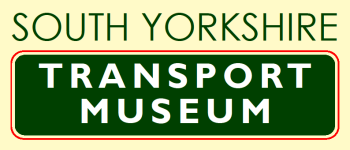FET 195 - Bedford OLAZ
Bodywork: 'Tower Wagon' by Eagle
Original owner: Rotherham Corporation Transport
Year: 1949
Part of Museum collection
Rotherham Corporation ran trolleybuses from 1912 to 1965. Until the early 1950s the trolleybuses were exclusively single-deck (although there was a short experiment with a double deck trolleybus in the 1930s). From 1956 double deck trolleybuses were introduced on certain busy routes.
The purpose of the tower wagon was to provide an easy means of access to the overhead wires. Unlike trams, which 'returned' the current through the rails and therefore needed only one overhead wire, trolleybuses 'collected' and 'returned' their current from a pair of overhead wires, which were a foot or so apart. The wagon also had a work bench and a supply of spares so that it could render 'first aid' to any trolleybus that had failed in service. FET 195 was active in this way for about fifteen years.
After the end of the trolleybus service in 1965, FET 195 performed general duties - e.g. access to a prominent clock in Rotherham town centre - and was also used as an apprentice-training vehicle. Following a period of inactivity it was sold for preservation in the late 1970s and acquired by the museum in 1984 when the former owner donated it for continued preservation which has since been completed in our workshop.
We are grateful to the Trolleybus Museum at Sandtoft for the loan of the rotating platform gear wheel from their Eagle tower wagon.

